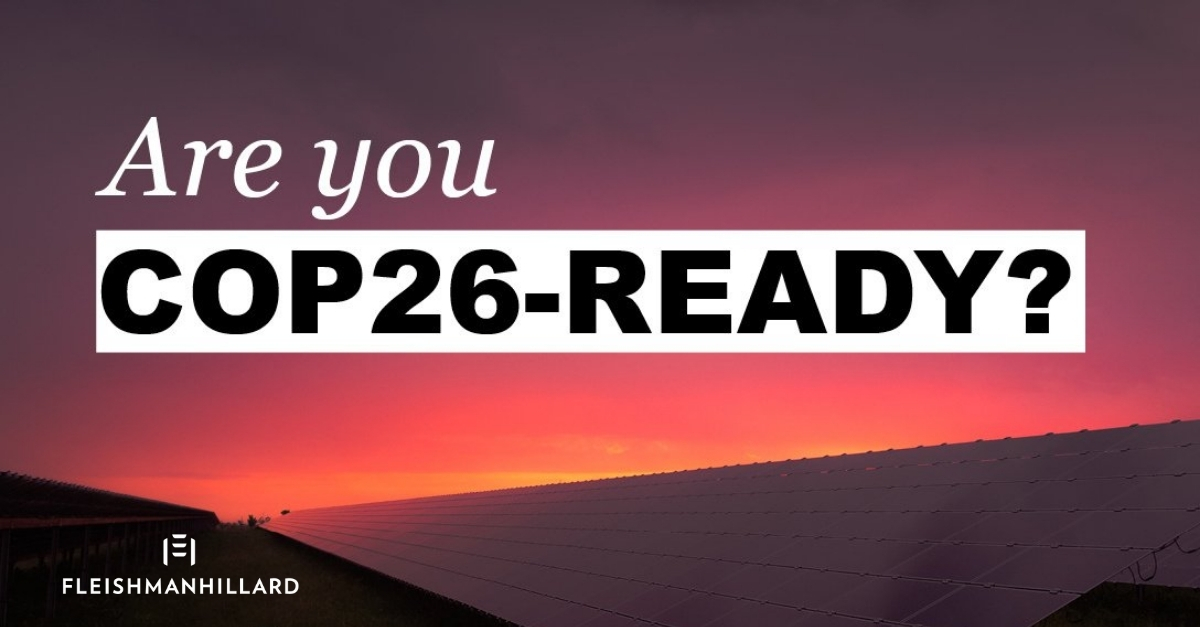Connecting to COP26 – View from Brussels
COP26 – The view from Brussels from Jane Gimber, Associate Director, Financial Services and Head of Sustainability, and Maximo Miccinilli, Senior Vice President and Head of Energy and Climate, FleishmanHillard Brussels
GETTING ‘FIT FOR 55’ TO BECOME THE FIRST CARBON-NEUTRAL CONTINENT | COP26 – The view from Brussels
The EU entered the COP26 negotiations with its 2030 goals clearly laid out on the table: a milestone package of binding legislation – ‘Fit for 55’ – that will reduce greenhouse gas emissions by -55% by 2030 across energy, land use, transport and taxation policies.
The EU’s ambition is equally clear: to lead the charge to become the first climate-neutral continent.
Fit for 55 negotiations will not radically change after COP26, and reaching the -55% GHG reduction target by 2030 remains per se a thorny journey for the EU.
The speed of the transition will require more renewables, faster electrification (particularly electric vehicles), low carbon hydrogen, and well-targeted innovation and recovery funds. But this won’t be enough. The EU is calling on the world to ‘put a price on carbon’, to kick-off the linkage process between similar cap-and-trade systems and to launch a new Climate Club.
For those not prepared to commit, they will face the unpopular Carbon Border Adjustment Mechanism (CBAM) – an import levy on certain products with high emissions content. The stakes are high, and major economies may enter into negotiations or fight back by filing a new wave of cases at WTO level.
Yet the current energy price crisis risks undermining Europe’s ambitions to lead by example and has served as an uncomfortable reminder of the work that is yet to be done to increase low-carbon and renewable energy sources across the EU.
A hotly debated EU-wide taxonomy for sustainable activities is a key pillar of the EU’s climate finance ambitions. Yet this framework is also facing significant challenges, with opposing views on the sustainability profile of nuclear energy and gas highlighting divisions that reflect the diverse nature of national energy mixes.
In the midst of a new German government formation, and ahead of presidential elections in other Member States, not least Italy and France, finding the agreement needed to implement the taxonomy and Fit for 55 package may not be a smooth process.
After COP26, the EU’s climate diplomacy will be an important enabling factor in moving forward – both internally and externally.
This ‘Connecting to COP26’ series is brought to you by the FleishmanHillard Cop26 Unit as part of the COP26 Daily Digest. For more information, please contact the FleishmanHillard COP26 team.
Find Out More
-
Achieving Outsized Impact by Building Stronger Country Reputation
February 18, 2025



